| Content | Rupert Neve Designs' Shelford Channel, over a half century in the making, is the definitive evolution of Mr. Neve's renowned 80 Series channel module technology, updated and refined for the contemporary studio. The Shelford Channel is fitted with Rupert's latest Class A transformer-gain mic preamp, the best-of-the-classics Inductor EQ from the Shelford 5052, a punchy diode-bridge compressor, the alluring analog textures of variable Silk saturation, a state-of-the-art dual-tap transformer output stage with massive headroom, and double the operating voltage of vintage designs. Offering rich tonal options for making audacious statements with your music, along with precision-detented controls for recall, the Shelford Channel delivers the authoritative sonic essence of classic Rupert Neve designs, along with modern versatility.
Input stage and transformer-gain mic pre
Rupert Neve's first new Class A, transformer-gain mic preamplifier in over 40 years makes its debut in the Shelford Channel. Rupert has spec'd this preamp with a direct-coupled transformer input; gain is provided by the custom transformer itself. The proprietary input transformer, and its meticulous integration with the surrounding Class A input amplifiers, plays an outsized role in the Channel's immediately recognizable sonics: punchy and creamy-smooth, with excellent isolation and vanishingly low noise.
The Shelford Channel's front-panel hi-Z instrument input uses the same discrete Class A field-effect transistor with transformer topology as Rupert Neve Designs' acclaimed RNDI; for gain, however, it utilizes the new RN4012 input transformer directly into the mic preamp. This design provides astonishing clarity on hi-Z sources, with substantial low-end weight and silky-smooth high frequencies. The DI also gives you a passive thru output to feed a guitar or bass amp.

- Mic-DI/Line: switches between microphone/direct injection input and line input
- GND Lift: disconnects the audio signal ground from chassis earth
- Signal LED: green indicates Signal Present; red indicates imminent input stage clipping
- Mic Gain: 12-way precision rotary, controls gain from 0dB to 66dB in 6dB steps
- Trim: rotary switch provides further continuous gain adjustment of +/-6dB
- 48V: switch engages phantom power on the mic input
- Phase: inverts the polarity of the signal path (illuminates when engaged)
- HPF Freq: engages a 12dB/octave highpass filter, variable from 20Hz-250Hz
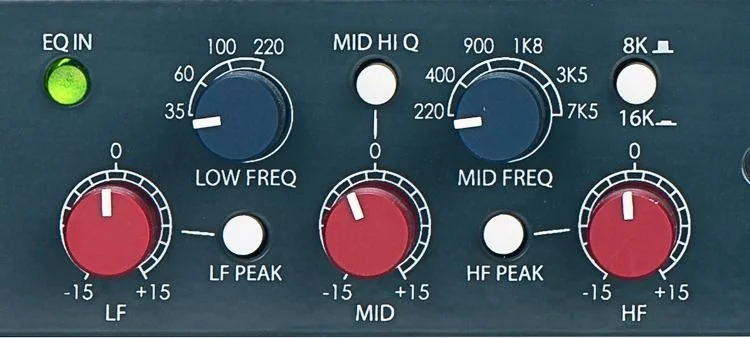
The best-of-the-classics inductor EQ
The Shelford Channel's EQ section is a 3-band, custom-tapped inductor circuit containing Rupert's favorite bands from his vintage equalizer designs. The low-frequency band is primarily based on the 1064 — acclaimed for its creamy, resonant bass. Unlike the 1064, though, the Channel gives you added dimension, punch, and control over your low end by letting you use the LF band as either a peaking or a shelving filter. The midrange band is based on the venerable 1073 and is perfect for sweetening instruments and vocals while nudging them forward in a mix. "Proportional Q" response also makes it ideal for attenuating problem frequencies. The high-frequency band is a hybrid design with the best of vintage and modern attributes. It should be noted that this EQ is in no way a clone; it's a decidedly modern design using components and techniques that simply did not exist in the 1970s — for instance, the use of capacitor-based topologies to achieve sonic richness and enhanced control.
- EQ In: engages all EQ frequency bands except HPF
- LF: adjusts up to 15dB of boost/cut at the selected low frequency
- Low Freq: 4-position rotary switch for selecting LF band corner or center frequency
- LF Peak: selects LF shelving (out) or peaking (in) mode
- Mid Hi Q: selects between a mid-band resonance of 2 (out) or 3.5 (in)
- Mid: adjusts up to 15dB of boost/cut at selected mid frequency
- Mid Freq: 6-position rotary switch selects center frequency of the midband EQ stage
- HF Peak: selects HF shelving (out) or peaking (in) mode
- 8K/16K: selects between an 8kHz (out) or 16kHz (in) center or corner frequency for HF band
- HF: adjusts up to 15dB of boost or cut at selected high frequency
The Super Diode-bridge Compressor
Like the Shelford Channel's inductor EQ and transformer-gain microphone preamp, the diode-bridge compressor/limiter is based on the topologies found in vintage Neve designs such as the 2254. It improves, however, on the early designs by the inclusion of full-wave rectification and a bevy of new control features. Although Rupert's vintage diode-bridge compressors were prized for their warm, punchy response, they were somewhat compromised by imprecise controls, attack-time inflexibility, low headroom, and high noise. The Shelford Channel's Super Diode-bridge Compressor delivers the attitude-packed, "in your face" sound of those classics, but with modern precision and flexibility — which makes it ideal on any source. Full Side-chain and stereo Link features are provided.
- Side Chain Insert Jacks (rear-panel): for fine tuning of compressor operation
- Comp In: engages the Channel's compressor-limiter section
- Threshold: sets level where the compressor "kicks in"
- Ratio: sets compression slope from 1.5:1 (minimal) to 8:1 (heavy)
- SC Insert: inserts rear-panel sidechain insert jacks into sidechain signal path
- HPF to S/C: routes highpass filter into the circuit that compressor uses to determine level
- Gain: for adding make-up gain to compensate for level attenuation lost to compression
- Timing: 6-position rotary adjusts attack/release speed of the compressor
- Link: links the sidechain control of multiple units for ganged or stereo operation
- Pre EQ: changes the order of compressor in the circuit chain
- Blend: mixes the dry and compressed signal for handy parallel compression
- Fast: speeds up both attack and release of the selected compressor time constant
Dual-tap transformer output
The Shelford Channel's output stage serves up the inimitable sound of Rupert Neve's classic designs while providing far more tonal versatility. The dual-tap output for the RN2042 square-core output transformer provides both high- and low-headroom outputs without compromising performance. The high-headroom tap takes advantage of the Shelford's higher-voltage design, delivering a pristine sound without non-linear output-stage coloration at high levels. The low-headroom tap, on the other hand, lets you drive the full voltage range of the Channel to accentuate this non-linear harmonic content — without clipping most pro interfaces. For vocals, drums, guitars, bass, and other instruments, this output lets you hit the transformer's sweet spot, which can inject life into a recorded performance in a way that other effects cannot.
The Silk and Texture controls
The Shelford Channel is packing a secret weapon the classics never had: its output transformer features the Silk Red/Blue and Texture controls from the Portico II Series that let you tailor the harmonic content and tonality of the output stage. By engaging these controls and sufficiently driving your output, you can dial in delectable 2nd- and 3rd-order harmonic distortion (that's the good kind) and saturation of the output transformer, imbuing your tracks with juicy rich thickness (think: 1073 on steroids) — with no danger of overloading the output stage. The Silk Red mode emphasizes harmonic content generated by the source's high frequencies; Blue mode, conversely, works off the low frequencies. The Texture knob controls the amount of added harmonic content. Disengage Silk, and your output is pristine and modern, while retaining Rupert's bigger-than-life transformer sonic signature.
The magical sound of Neve
Rupert Neve is an audio legend whose electronics designs defined the golden age of analog. Those of us at Sweetwater who have had the privilege of working on a Neve 8078 or its predecessors can attest to the fact that Neve's Series 80 consoles were indeed the pinnacle of hand-wired analog mixing desks. Mr. Neve has remained at the forefront of audio-circuit innovation for over half a century, and his current company, Rupert Neve Designs, continues to advance the state of the art with cutting-edge products that sound incredible and intelligently address the challenges of the digital age.
Rupert Neve Designs Shelford Channel Features:
- The definitive evolution of Rupert Neve's renowned 80 Series channel module technology
- A complete channel strip that delivers the essence of classic designs, along with modern versatility
- Input stage and transformer-gain mic pre
- Front-panel hi-Z direct input
- Best-of-the-classics inductor EQ
- Super Diode-bridge Compressor
- Dual-tap transformer output
- Silk and Texture controls
| With a big, bold preamp, a swept high-pass filter and the powerful saturation control of variable Silk, the 511 combines legendary Rupert Neve tone with 500 Series value.
What is Silk?
One of the key features of the 511 is the Silk / Texture control. The Silk circuit was initially developed for the original Portico series mic preamplifiers, and was only a single switch – on or off – that added a specified amount of musical, pleasing harmonic saturation to the unit’s output stage.
Taking this concept one step further, the Texture knob is designed to adjust the actual amount of harmonic content from the source material.
So how does it work? By reducing negative feedback across the output transformer and adjusting this feedback’s frequency response, the Silk / Texture circuit provides the sweet, musical saturation found in Rupert’s legendary vintage designs – but with complete & precise control over the amount of classic tone you want.
NOISE
- Measured at Main Output, un-weighted, 22 Hz - 22 kHz, source impedance 150 Ohm balanced. Noise performance can vary depending on the 500 series and / or interference from stray magnetic fields.
- Unity Gain: Better than -103 dBV
- Gain @ +66 dB: Better than -60 dBV
- Equivalent Input Noise: -125 dB
FREQUENCY RESPONSE
- Main output, no load.
- +/- 0.1 dBu from 10 Hz to 31.5 kHz
- -2.6 dB @ 120 kHz
MAXIMUM OUTPUT LEVEL
+23 dBu
TOTAL HARMONIC DISTORTION AND NOISE, NO SILK
- @ 1 kHz, +20 dBu output level, no load: Better than 0.0025%
- @ 20 Hz, +20 dBu output level, no load: 0.025% Typical (2nd and 3rd harmonic)
TOTAL HARMONIC DISTORTION AND NOISE WITH SILK ENGAGED
- @ 100 Hz, +20 dBu input level, no load.
- TEXTURE @ min: 0.015%, mostly 3rd harmonic typical
- TEXTURE @ max: 2%, mostly 2rd harmonic typical
GAIN
- Unity up to +66 dB in 6 dB steps.
- Trim continuously adjustable from -6 dB to +6 dB.
PHANTOM POWER
Supplied by the 500 series rack power supply. Switch selectable on faceplate.
HIGH PASS FILTER
- Continuously variable swept frequency from 20 Hz to 250 Hz.
- Slope: 12 dB/Octave
POWER REQUIREMENTS
@ +/-16VDC, 100mA | If there’s one style of preamp that professional engineers would unanimously agree has defined the tone of pop/rock records for decades, it would most definitely be the venerable '73-style of mic pre. '73-style preamps have been massively used in recording and live applications for many years and are still considered to be the “Holy Grail” of preamp choices today. The Warm Audio “WA73 Family” consists of single and dual channel '73-style preamps (with & w/out EQ), that each pay careful homage to British audio history.
When we at Warm Audio decided to release the WA73-EQ it was imperative that it met vintage expectation in both design and performance. The tone and sweet character that vintage '73-style mic preamps impart is so unique and familiar, that we had only the pure desire to release sonically accurate reproductions. After years of R&D, intense research and countless hours of auditioning, the WA73-EQ was born!
The WA73-EQ is a “Desert Island” boutique preamp, but it can also be classified as a studio and live work-horse. Classic '73-style preamps are known for being versatile tools that work with all kinds of microphones from Condenser, to Dynamic, to Ribbon. The WA73-EQ equally shines on all types of microphones and sources including; vocals, acoustic/electric guitars, bass, drums, percussion, orchestras, keyboards, and even as a tone shaping tool to run partial or complete mixes through. With 80dB of gain and a fully discrete Carnhill Transformer balanced signal path, there’s no recording, mixing or engineering task that the WA73-EQ can’t handle.
Enthusiasts unequivocally get excited about the components used in classic '73-style British preamps. The signal transformers are a common topic of conversation. Vintage units used various versions of transformers throughout the years, but the most coveted were the earliest versions. These are regarded as the most desirable choice due to their fluid and forgiving nature. They saturate sweetly when pushed, and have been known to make engineers cry when they hear how beautiful their mixes sound through them!
Warm Audio worked closely with Carnhill Transformers of Cambridgeshire, UK, to design faithful reproductions of these most coveted, early version transformers. We at Warm Audio have not yet heard a modern day '73-style preamp sound as sweet and musical as does our WA73-EQ with these beautiful custom Transformers.
An important part of the classic British circuits not often discussed are the different styles of capacitors and output transistor used. We found it important to maintain integrity to the original design by using tantalum and polystyrene capacitors in the signal path and an output transistor choice that is much smoother in the high gain settings than what is typically found in modern '73-style reproductions.
A great sounding '73-style circuit should be just as reliable as it is great sounding. The complex dual concentric switch potentiometers in the EQ sections of the WA73-EQ are made in the UK by Blore Edwards who manufacture military spec switches and potentiometers. The use of Blore-Edwards components is no small inclusion for a '73-style preamp-eq in this price range.
Classic '73-style preamps were often hand-wired and so is the WA73-EQ! Guru’s claim that a portion of the sought after classic British tone can be attributed to the hand-wired nature of the build. The WA73-EQ is hand-wired and hand assembled, including the pcb components that are all populated by hand.
- SINGLE CHANNEL, CLASS A, '73-STYLE BRITISH MICROPHONE PREAMP WITH EQ
- UK MADE CARNHILL TRANSFORMERS
- UK MADE - BLORE EDWARDS EQ DUAL-CONCENTRIC SWITCH POTENTIOMETERS
- HAND WIRED, HAND ASSEMBLED
- 80DB OF GAIN - RESISTOR STEPPED GAIN SWITCH
- FULLY DISCRETE
- TONE BUTTON - CHANGES INPUT TRANSFORMER IMPEDANCE FOR VARYING TONE
- POLARITY SWITCH
- 48V PHANTOM POWER
- INDUCTOR BASED 3 BAND EQ
- LOW BAND BOOST/CUT - 35, 60, 110, 220 HZ
- MID BAND BOOST/CUT - 360, 700, 1600, 3200, 4800, 7200 HZ
- HIGH BAND BOOST/CUT - 10, 12, 16 KHZ
- ADDITIONAL HIGH BAND FREQUENCY EQ POINTS ADDED (COMPARED TO VINTAGE 1073)
- 4 POSITION INDUCTOR BASED HIPASS FILTER - 50, 80, 160, 300 HZ
- XLR MIC INPUTS (FRONT & BACK)
- LINE LEVEL TRS INPUT
- TS SEND/RECEIVE INSERT JACKS
- XLR & TRS LINE LEVEL OUTPUTS
- DIRECT IN, INSTRUMENT INPUT
- OUTPUT CONTROL
- LED LEVEL INDICATION
- FREQ RESPONSE 20HZ - 20KHZ +/-.5 DB
- 19" RACK MOUNTABLE
- INTERNAL IEC 115V/230V POWER INLET
| The Scarlett OctoPre is the ideal 8-channel expansion for any Scarlett - or other digital interface with ADAT inputs. ADAT is a simple and easy way of increasing the number of simultaneous recording channels available in your studio. With eight channels of Focusrite's 2nd generation Scarlett preamps and precision A-D conversion at sample rates up to 192 kHz, Scarlett OctoPre is the ideal way of increasing the number of inputs in your studio. It also offers eight balanced line outputs, sourced directly from their respective mic preamps for use on stage in a live environment.
Eight natural-sounding 2nd generation Scarlett mic/line inputs deliver high headroom, plenty of clean gain, low noise and minimal distortion - ideal for tracking drums as well guitars, keyboards, vocals and more. The front panel features two newly-designed instrument inputs with extended headroom. ADAT outputs let you connect to any interface or digital system with ADAT optical inputs, and analogue line outputs let you feed an analogue console at the same time as recording with the digital outputs.
- Eight natural-sounding 2nd generation Scarlett mic preamps
- Eight balanced line inputs
- Focusrite precision A-D conversion up to sample rates of 192 kHz
- Dual front-panel instrument inputs
- Pad on every channel for extra headroom - ideal for loud sources such as drums
- Eight balanced line outputs - ideal for live use
- Accurate 5-segment LED input metering
- Simple ADAT connectivity via optical cables
- 48V Phantom power available on every channel for condenser mics
- State-of-the-art digital clocking with Word Clock I/O for synchronisation with external devices
Create studio quality vocals, powerful guitars, luscious keys and huge drums, then mix and master with iconic Focusrite studio hardware – all in the box. Every new Focusrite Scarlett 3rd Gen interface comes with an unbeatable range of tried-and tested studio tools from some of the biggest names in the business:
- Antares Auto-Tune Access
- Relab’s LX480 Essentials
- Softube Marshall Silver Jubilee 2555
- XLN Audio Addictive Keys
- XLN Audio Addictive Drums 2: Studio Rock kit
- Brainworx bx_oberhausen
- Brainworx bx_console Focusrite SC
- Focusrite Red Plug-in Suite
- Brainworx bx_masterdesk
| Rupert Neve Designs RNHP is a state-of-the-art headphone amplifier. Now when Mr. Neve turns his attention to anything, you know it's going to be good. And spectacularly so. What the RNHP delivers is reliable, reference-grade amplification for any pair of headphones. Based on the headphone amp in the RND 5060 Centerpiece, the dedicated 24-volt design is spec'd with calibrated +4dBu Line, RCA, and 1/8" stereo inputs. Everything's housed in a road-tough, VESA-mountable steel chassis. The unit's effortless sonic performance and the ability to drive virtually any 'phones without compromise let you perform, mix, and savor your music with stunning clarity.
Rupert Neve Designs RNHP at a Glance:
- Unerring accuracy for better performances
- The benefits of near-zero-ohm output impedance
Unerring accuracy for better performances
You know you perform your best when your cans sound great - and that's where the RNHP can make a huge difference. Many integrated headphone amps are plagued with a non-linear frequency response, as well as noise, distortion, and skimpy headroom. To some, these units' lackluster sonic performance may seem "close enough for rock 'n' roll," however at Sweetwater, we believe there is the performer's subconscious response to consider. After all, if you're not inspired by what you're hearing, your performance will suffer.
The benefits of near-zero-ohm output impedance
Rupert Neve Designs spec'd the RNHP with near-zero-ohm output impedance to minimize frequency-based reactive-load impedance shifts - a problem unique to headphone monitoring. This ensures accurate sound reproduction, which is obviously important if you need to trust the decisions you make with headphones. You'll find the RNHP's unerring accuracy beneficial when you're using just one set of cans, and also when you're comparing a mix on multiple pairs of headphones.
Rupert Neve Designs RNHP Features:
- Reliable, reference-grade amplification for any pair of headphones
- Based on the headphone amp in the RND 5060 Centerpiece
- Effortless sonic performance
- The ability to drive virtually any headphones
- Dedicated 24-volt design
- Calibrated +4dBu Line, RCA, and 1/8" stereo inputs
- Near-zero-ohm output impedance minimizes frequency-based reactive-load impedance shifts
- Road-tough, VESA-mountable steel chassis
| The TB12 Tone Beast Black is a fully professional preamp design with loads of gain that can effortlessly capture an array of sources very well. It is a swiss army knife full of options and tones. With top notch CineMag transformers and multiple discrete signal paths, it's hard to beat the Tone Beast's big, bold, fully-professional sound at this price.
The Tone Beast Black is a mic pre that likes to be pushed and when pushed will colorize your signal ever so sweetly. The 2 opamps and 2 output transformers at the flip of their switches won't appear to be much different, but as one drives the pre into harmonic distortion, the unique character of each of these components becomes apparent. The Tone Beast Black is customizable and allows users to source and swap in their own opamps. The output control on the TB12 allows you to limit the signal exiting the preamp even when pushing the gain to really hot levels, giving you maximum control.
When designing the TB12 Tone Beast Black our goal was to make a microphone preamplifier affordable and jam packed full of options, without compromising the quality and design parameters that make this type of microphone preamplifier so desirable.
The TB12 "Tone Beast Black" is a fully discrete, high-voltage microphone preamplifier, utilzing CineMag USA Transformers. Have no fear of hurting the Beast, you can push it very hard into full-on distortion if you wish, and these can sound quite nice on electric guitar, bass or anything else that likes some grit.
The different component options in the TB12 are subtle, but when driven into saturation are noticeable and can make a big difference to the way your final mix will sound. Home-based musicians and professional studios alike will find the Tone Beast Black to be an extremely powerful and fully professional piece of gear that is capable of warming and shaping signals/mixes in a way that is very pleasing to the ear.
- 71DB OF GAIN
- TRANSFORMER SELECTION PROVIDES BOTH STEEL AND 50% NICKEL CINEMAG OUTPUT TRANSFORMERS FOR VARYING CHARACTER
- TRANSFORMER BYPASS SWITCH ALLOWS FOR REMOVAL OF THE OUTPUT TRANSFORMER FROM THE CIRCUIT
- DISCRETE OPAMP SELECTION ALLOWS FOR CHOOSING BETWEEN A 1731(VINTAGE) AND 918(CLEANER) STYLE OPAMP. THESE ARE SOCKETED/SWAPPABLE WITH YOUR CHOICE OF 2520 6 PIN FOOTPRINT OPAMPS
- IMPEDANCE SWITCH LABELED TONE TO SWITCH BETWEEN 150 AND 600 OHMS INPUT IMPEDANCE
- 2 MEG OHM TRUE HI-Z INPUT ON FRONT PANEL SENDS INSTRUMENT SIGNAL THROUGH ENTIRE CIRCUIT INCLUDING BOTH CINEMAG TRANSFORMERS AND THE DISCRETE OPAMPS. GREAT FOR GUITARS, BASS, KEYBOARDS AND OTHER INSTRUMENTS THAT HAVE A 1/4″ OUTPUT JACK
- 80HZ HIPASS FILTER
- POLARITY REVERSE
- UTILIZES PREMIUM GRADE CINEMAG USA TRANSFORMERS
- +48V PHANTOM POWER
- OUTPUT ATTENUATION ALLOWS FOR SATURATION FLEXIBILITY OF BOTH OPAMPS AND TRANSFORMERS
- ¼" INSERT FOR THE USE OF INLINE COMPRESSORS, EQ'S ETC
- BALANCED XLR MIC (FRONT AND BACK), BALANCED TRS LINE, AND ¼" UNBALANCED INSTRUMENT INPUTS
- BALANCED XLR AND TRS OUTPUTS
- -20DB PAD
- LED VU METER
- 19" RACKMOUNTABLE
- SWITCHABLE 115/230 VOLT IEC POWER INLET.
- CAPACITOR SELECTION BETWEEN TANTALUM AND ELECTROLYTIC FOR DIFFERENT CHARACTERS
|


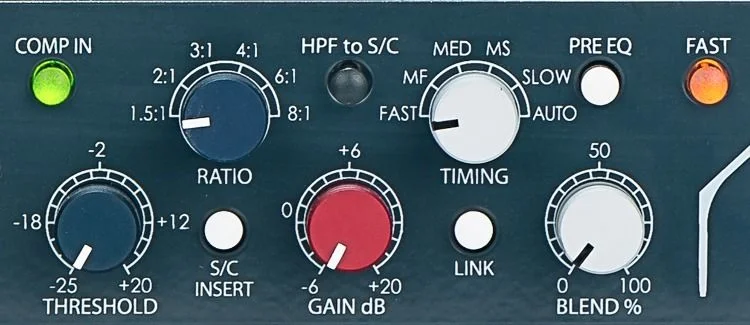




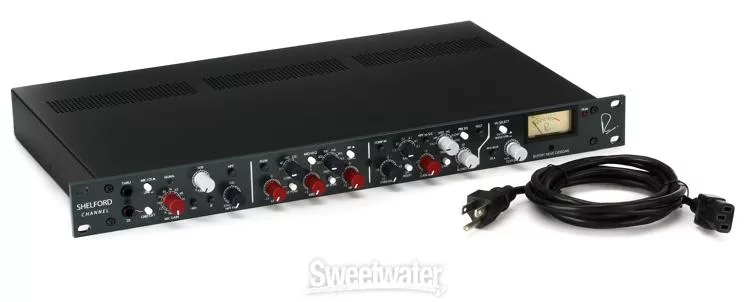




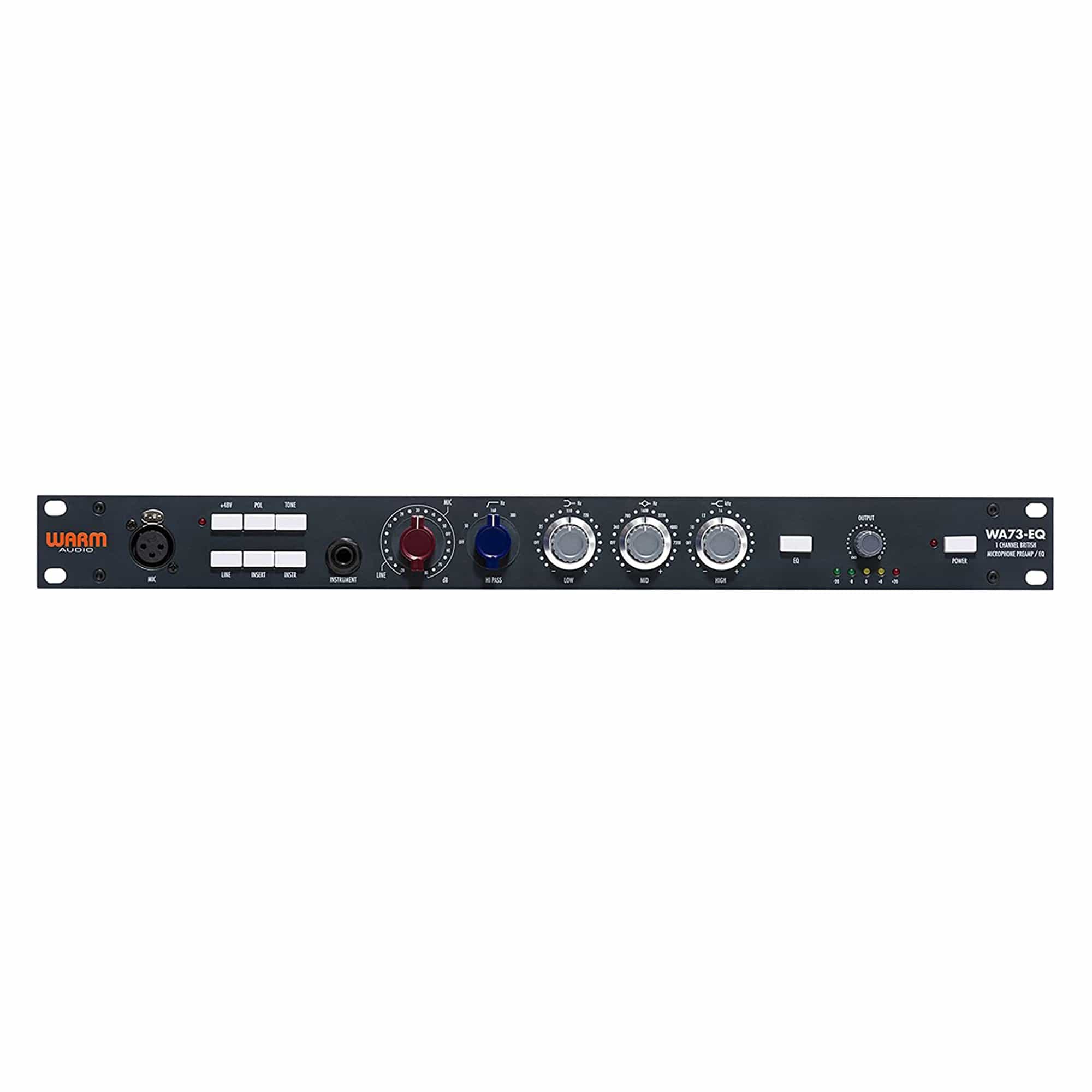



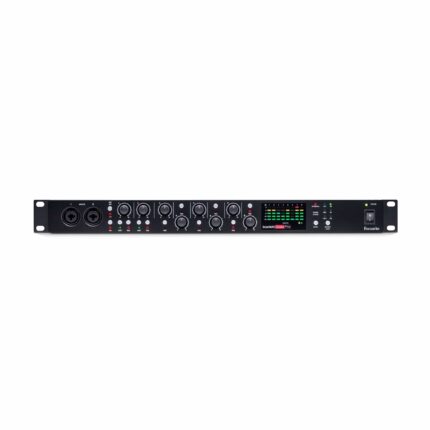
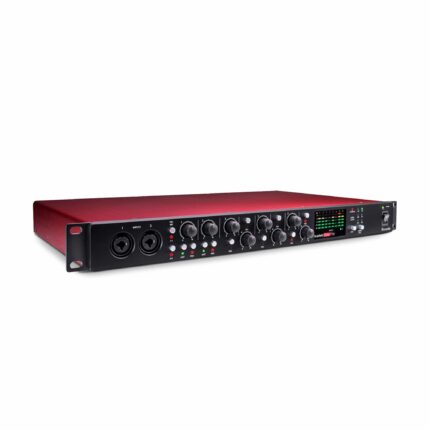
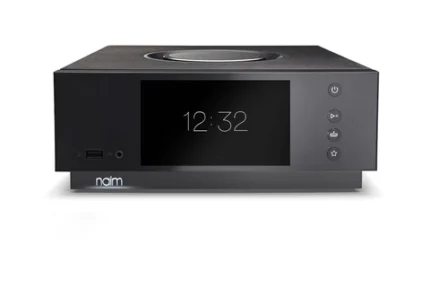
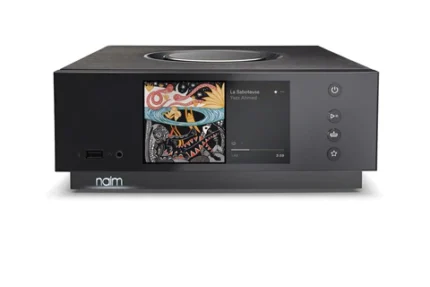
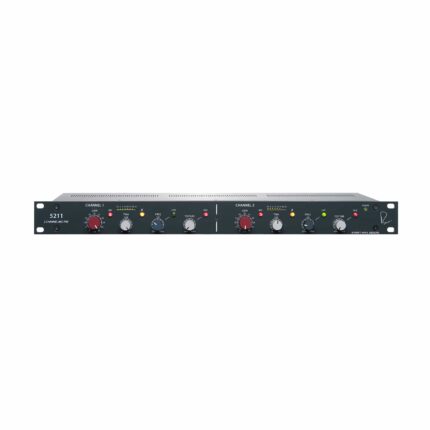
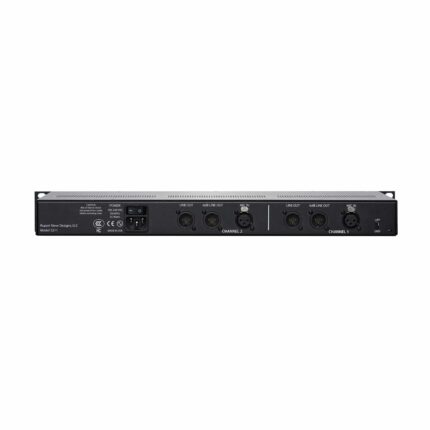





Reviews
There are no reviews yet.